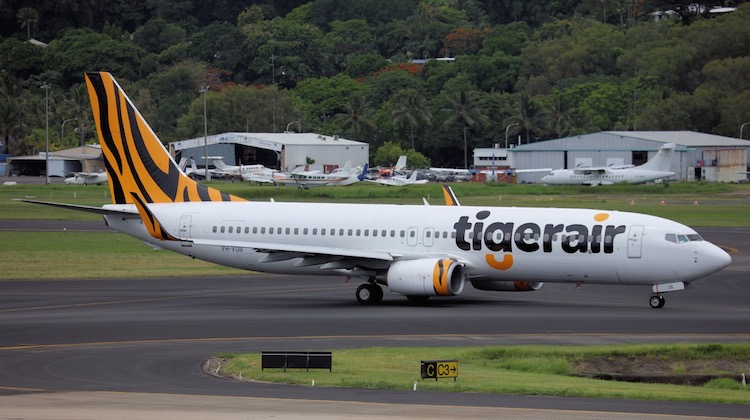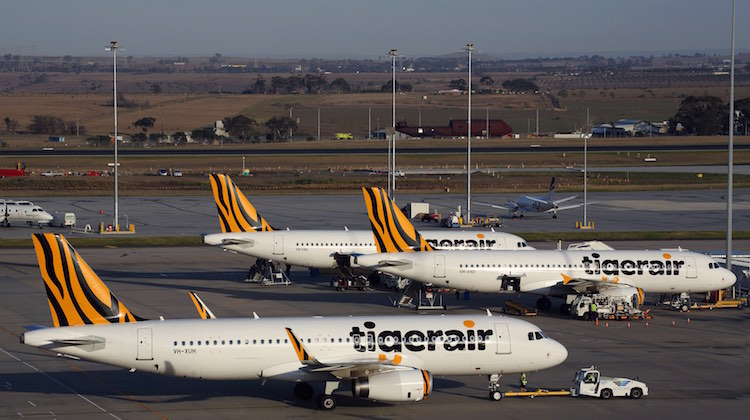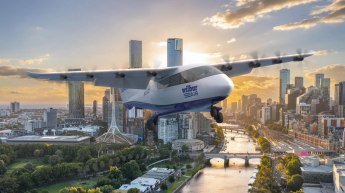
Tigerair Australia will shortly add a fourth Boeing 737-800 as part of its fleet transition that is expected to take a few more years to complete, chief executive Merren McArthur says.
Currently, the Virgin Australia-owned airline has 15 aircraft comprised of 12 Airbus A320s and three 737-800s operating on Australian domestic routes. The Tigerair Australia website showed it flew to 13 destinations and served every state and territory.
The A320s are being gradually withdrawn as part of a fleet simplification plan across the Virgin Australia group of airlines first announced in July 2016 where Tigerair Australia would be an all-Boeing operator.
At the time, Virgin Australia said Tigerair Australia’s A320s would be replaced by 737-800s over a three-year period.
However, McArthur told the CAPA – Centre for Aviation Australia Pacific aviation and corporate travel summit in Sydney on August 2 the process would be ongoing over the next few years.
“We currently have three 737s in our fleet and a fourth one is coming into our fleet in the next couple of months,” McCarthur said in response to a question.
“At the moment we are trying to line it up with the exits of our A320s because that minimises the cost because obviously an early exit would impact our cost base.
“It’s going to happen over the next year or so, few years.”
Tigerair Australia’s 737-800s are being sourced from parent Virgin Australia. The three Boeing narrowbodies currently flying in Tigerair Australia colours are VH-VOY, VH-VUB and VH-VUD.
The trio was initially used to help launch nonstop flights to Bali from Adelaide, Melbourne and Perth in March 2016.
When Indonesian authorities withdrew authorisation for Tigerair Australia to serve Bali in February 2017, those 737-800s were redeployed back into the Australian domestic network.

Virgin Australia has flagged Tigerair Australia resuming international operations as part of its response to Air New Zealand’s decision to walk away from the pair’s trans-Tasman alliance from October 2018.
Asked about the prospect of Tigerair Australia commencing flights to New Zealand, McArthur said her current focus was on the airline’s operational performance and the domestic market.
“Right now, I’m just focused on optimising our domestic network, plenty of opportunities there,” McArthur said.
“I think we will continually assess that market as it moves through these changes and if there’s an opportunity down the track we will assess it and it might be an opportunity for Tiger but nothing in plan at the moment.
“The airline has been through a massive amount of change over the last 18 months and that’s impacted the business performance so my focus is actually get it back to basics, back focused on its operational performance.”
Virgin Australia chief executive John Borghetti was also noncommittal about when potentially Tigerair Australia might start trans-Tasman services.
“We may, at some point, go on the Tasman,” Borghetti said at the CAPA summit.
“Not tomorrow, but may at some point.”
Tigerair Australia steps back from Value Alliance
That focus on the domestic network has also extended to Tigerair Australia’s decision to take a step back from plans to join the Value Alliance, which was first announced in May 2016.
The alliance was designed to bring together a group of pan-Asian LCCs and allow them to sell connecting fares throughout Asia Pacific and expand their distribution network.
McArthur said the development of the Value Alliance “probably hasn’t I suppose progressed at the speed that the different airlines would have liked”.
“From Tiger’s point of view there’s quite a lot of investment required to properly extract the benefits of that alliance and so we’re probably looking to invest in other areas at the moment,” McArthur said.
CAPA’s Blue Swan Daily website reported the Value Alliance’s new booking portal launched in May, albeit with some limitations as only select city pairs were available for purchase.
“Tigerair Australia has 10 exclusive destinations but none are available for sale on the Value Alliance website due to a decision by Tigerair Australia to not participate,” Blue Swan Daily said on May 23.
McArthur says Tigerair Australia fundamentals strong
McArthur was appointed chief executive of Tigerair Australia in March 2018.
Previously, Tigerair Australia executive manager flight operations Peter Wilson has been acting chief executive since June 30 2017, when Rob Sharp was called up to head office to run Virgin Australia airlines following the sudden departure of John Thomas.
“What I have been really pleased to see is that the fundamentals of the airline are really strong,” McArthur said.
“Every time I fly a customer comes up to me and makes a point of saying to me how much they enjoy the service that we offer in flight in particular and on the ground so that’s fabulous.
“We’ve still got a very good low cost base which enables us to offer very competitive fares. We’ve got a very innovative and nimble team.”
McArthur calls for more diversity in aviation
McArthur, who is among a very select number of females around the world to lead an airline, said aviation was “lagging other industries on the diversity front”.
“Women make up only three per cent of CEO roles within the global aviation industry compared to 12 per cent in other industries and in other senior executive positions the stats aren’t much better,” McArthur said.
Further, McArthur said the debate around diversity in aviation should be broadened beyond gender and also include “culture, race, age and even personality”.
Specifically on aviation, the Tigerair Australia chief executive also thought aviation needed to be more open to bringing people into the industry from other sectors.
“When was the last time you heard of an airline CEO being appointed from outside the aviation industry,” McArthur said.
“When was the last time you recruited someone into your team from outside aviation.
“It doesn’t matter where those differences arrive from so long as they are different, diverse and ideally representative.
“In this day and age so much of business strategy is transferable across industries and our insularity could mean that we are losing the one thing aviation has always been renowned for, leading edge innovation.”

McArthur prefers “airlines of choice” over LCC label
McArthur said the low-cost carrier label sent the message to consumers that airlines in that category were “cheap and nasty”.
Instead, there were potentially more apt titles such as “disruptive airlines”, “innovative airlines”, “full choice airlines” or her personal favourite “airlines of choice”.
“From the outset the LCC pioneers were about driving innovation in product and service to stimulate demand for air travel. The low-cost operating model was simply the enabler, not the product itself,” McArthur said.
“Can you imagine a discount retail store or hotel chain marketing themselves as low cost? No because consumers aren’t interested in the operating costs of a business, they are interested in the value, quality and price of the products and services they deliver.”
Speaking at the CAPA summit the day before McArthur took to the stage, Jetstar chief executive Gareth Evans put forward “unbundled carrier” or “choice carrier” as his preferred descriptors.
“I hate the term low-cost carrier, but we all understand what it means,” Evans said.
Speaking at the #CAPASummit in Sydney, #Jetstar CEO Gareth Evans says he prefers the term “unbundled carrier” or “choice carrier” rather than “low cost carrier” to describe his airline. pic.twitter.com/bGuhqorTrM
— World of Aviation (@the_wofa) August 1, 2018
















Billy the kid
says:World longest transition!!! Surely it can’t be that hard.
Last year Virgin shareholders were told that Tiger was going to accelerate the transition, 12 months later and Tiger is in the same position. I bet this year shareholders will be told that losses at Tiger are attributed to the 737 transition and the Bali fiasco. Sad really, it has so much potential…
Jim Smith
says:VH-VOR, the ex-Tiger all-white Virgin Australia aircraft that usually runs the routes out of New Zealand, is in the shop in Wagga Wagga presently being repainted and the interior changes.
Chris
says:To me, most LCC’s are cheap and nasty but they have to be due to their business model to cater for those travelers who want cheap basic air travel and who are happy to have unplanned service disruptions.
But there are LCC’s that are building an image of value for money travel like Scoot, Air AsiaX, Norwegian, etc, that are offering affordable air travel based on the LLC model but offering a range of value products based on the ‘fares to suit seat’ model.
Then there are full service carriers, like Air NZ with its ‘fares to suit seat’ model with the cheap ‘seats’ at the back of the aircraft, starting with seat only with 78cm pitch and complimentary tea. coffee and water to premium with extra seat pitch and complimentary services.
With regards to Tigerair flying the Trans Tasman, I don’t know. If they do, there could be a fare war with Jetstar and lessor extent Air NZ.